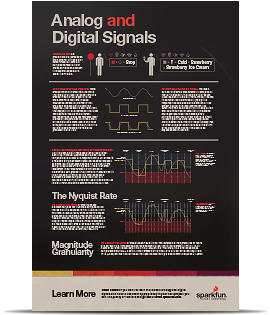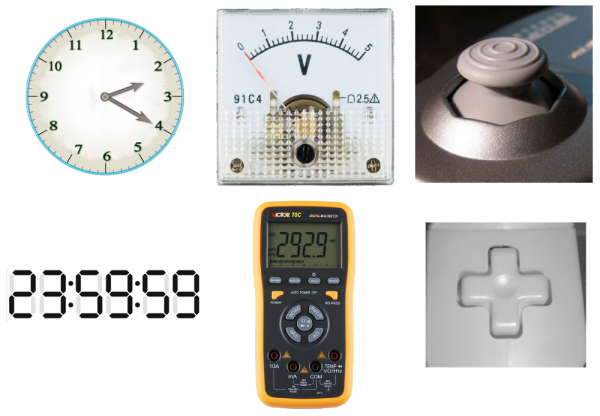Analog vs. Digital
Overview
We live in an analog world. There are an infinite amount of colors to paint an object (even if the difference is indiscernible to our eye), there are an infinite number of tones we can hear, and there are an infinite number of smells we can smell. The common theme among all of these analog signals is their infinite possibilities.
Digital signals and objects deal in the realm of the discrete or finite, meaning there is a limited set of values they can be. That could mean just two total possible values, 255, 4,294,967,296, or anything as long as it's not ∞ (infinity).
Working with electronics means dealing with both analog and digital signals, inputs and outputs. Our electronics projects have to interact with the real, analog world in some way, but most of our microprocessors, computers, and logic units are purely digital components. These two types of signals are like different electronic languages; some electronics components are bi-lingual, others can only understand and speak one of the two.
In this tutorial, we'll cover the basics of both digital and analog signals, including examples of each. We'll also talk about analog and digital circuits, and components.

Suggested Reading
The concepts of analog and digital stand on their own, and don't require a lot of previous electronics knowledge. That said, if you haven't already, you should peek through some of these tutorials:
- Voltage, Current, Resistance and Ohm's Law
- What is a Circuit
- And some mathematics concepts: reading graphs, and understanding the difference between finite and infinite sets.
